“Dad, I want to watch football!”
“Dad, I want to watch football!”
Santi, my four years old kid, tells us once in a while that he wants to watch football (soccer). The first time it happened was in June last year, during the Copa America 2015 that was played in Chile, while everyone around him was talking about the matches of the Chilean national team.
Most games were played at the evening so, every day after dinner, Santi asked if there was going to be “football of Chile”. His disappointment was pretty evident when there were no games, partly because he liked the ritual of the family together watching football, and partly because he did not want to sleep (just like any other little boy). He was very aware that football games allowed him to stay up later, just like his mom and dad.
He did not understand too much of what he was watching, but we tried to explain him that the red shirt players were from Chile and that they were trying to score goals against the white, green, yellow or light blue ones (yes, especially to the light blue ones), or whoever we had as rivals. He did not stay with us the whole game because he was easily distracted and began to play with any other toy, but he always kept attentive and quickly came back if he heard us celebrating a nice shot or, even better, a Chilean goal.
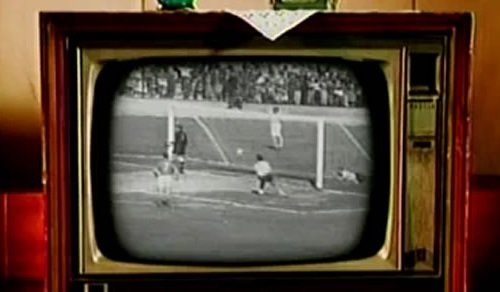
Santi also likes playing football. Like Diego, his older brother, whenever he sees a ball or something like it, no matter what size it is or where it is, he will try to kick it and send it as far as possible, sometimes with disastrous consequences.
Clearly, my children are no exception. Football is one of the most popular sports in the world and they are part of the millions of children that grow up watching football and listening to their family and friends talking about it.
Football and videogames
Being so popular, football has always been present in video games. The very first early versions were just basic simulations, given the technology constraints. If you were lucky, you could see human players; the rules were quite simplified and you really required enough imagination to actually feel like you were playing a football game.
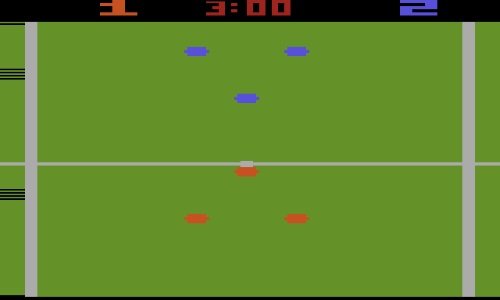
In the years that followed, a lot of franchises appeared that offered the user different “flavors” of the same sport. In Nintendo Worldcup, for instance, players could shoot powered balls that hit rivals, and it was usual that matches ended up with players hurt on the floor and scores of 10 or more goals.
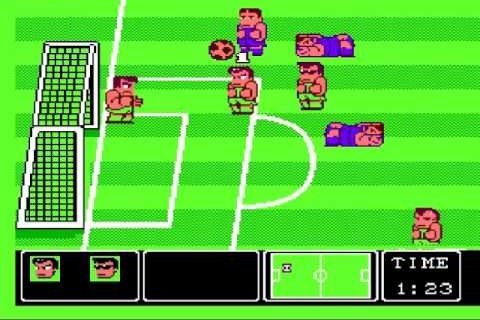
Other football games were released in which the main objective was not to move players during a match for scoring goals and defeating the opponent. On the contrary, these games were about managing the team, training the players and thus win championships, but when the matches were played, the only thing the user could do was to watch as a spectator, and sometimes give some instructions.
Championship Manager was one of the pioneers in this genre, but it was followed by others such as the fun and more recent Pocket League Story, for mobile devices.
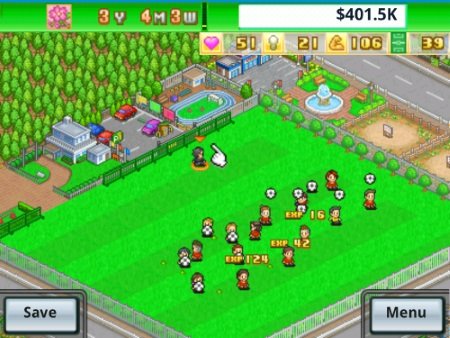
Of course, there are a lot of games that within the constraints of the technology available at the time they are published, they tried to give the player an experience as realistic and complete as possible. From the early Kick Off versions to the quite good Sensible Soccer, to the very famous Pro Evolution Soccer (PES) and FIFA games.
Every year, these two franchises release a new version in which they deliver more detailed graphics, better referees, commentators, repetitions, multiple cameras, realistic movements and accurate physical simulations. They are super-productions with huge budgets and quite large development teams.
Go to the park and play real football!
Video games have always been subject to prejudices about children remaining stuck for hours in front of a screen, drying their brains, making them dumber, etc. For those who actually believe that, it’s even more shocking that someone could enjoy playing football with a gamepad in his hands rather than going outside with a ball and playing real football.
“How can you enjoy making those dwarfs run behind that fake ball in the screen?”
“Can you please take that ball and go outside to the backyard to play with your brothers?”
“Go to the park and play real football!”
All those are phrases that I heard several times during my childhood and adolescence.
But beyond the prejudice issue, it’s true that those are valid questions. How is it possible that playing football on a screen to be really fun? Why did I enjoy so much playing those games in particular?
For sure, the exact reasons vary from person to person. In my case, the essence of football is that it is a social experience and, in that sense, football video games are fun for me when I can enjoy that social experience.
For instance, the first football games that I enjoyed as a child are the ones that I played with classmates. I spent amazing evenings participating in Nintendo Worldcup or Super Soccer tournaments. If the game did not include a built in multiplayer tournament system, we kept account of the results on a paper sheet. While two of us played against each other in a match, the rest were watching the game celebrating the nice shots and making fun of the mistakes.
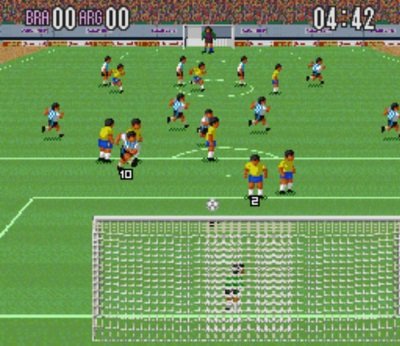
I also enjoyed playing with my brothers, either at home or at the “arcades” that were close to the hotels where we stayed while on vacation. Our favorite was, no doubt, Tehkan Worldcup. We could spend hours trying to win the seven games in a row that you had to play to reach the final and, the few times we managed to win all of them, the feeling of being the world champions was glorious. Even today, while writing this article, I had a nostalgia attack and played it again using an emulator.
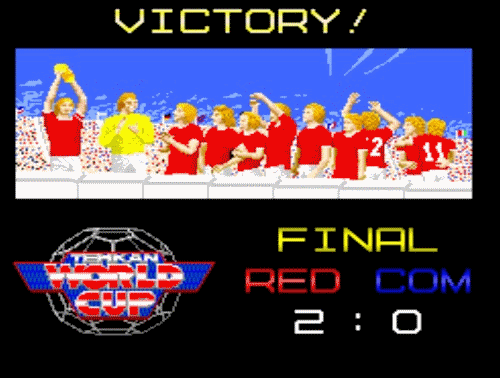
Years later, when I went to college, I spent hundreds of hours at one of my best friends’ place trying to defeat him in Winning Eleven. If I tried hard enough, I managed to get a draw. Furthermore, if the planets were aligned, a comet came close and it was a red moon night, I was able to defeat him. But even if I lost most of the games, the challenge and the experience of playing against a human rival was remarkable.
Nowadays, I still occasionally play any of the FIFA or PES versions whenever I have the chance. For instance, we have played several times in the office with some friends there. Also, a couple of years ago in a VG Chile meeting, the Bekho Team guys invited me to participate in a tremendous game that Marcelo and I finally won (the VG Chile Directors prevailed, as it was meant to be).
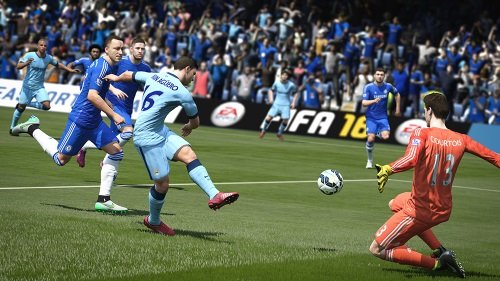
The last time I played was with four friends of my kid Diego. When he celebrated his birthday a few months ago, one of his friends brought the last FIFA version and they played for around an hour. Given that I like that game and I had not had the chance before to see the details of that particular version, I stood for a moment watching them play and suddenly one of the kids asked me if I wanted to play. It was really cool to have the opportunity to know a bit more my son’s friends while sharing a game with them; it was an experience that I valued a lot as a parent.
¿Hagamos un juego de fútbol?
When I was about fifteen, I wanted to develop a football game. I liked Tehkan Worldcup a lot and, as I was only able to play it in the arcades while on vacation, I thought it would be a great idea to develop my own version.
I spent weeks thinking about the technical details and drawing the field, the players like as they would look from above, and the moves that could be made by an eventual player.
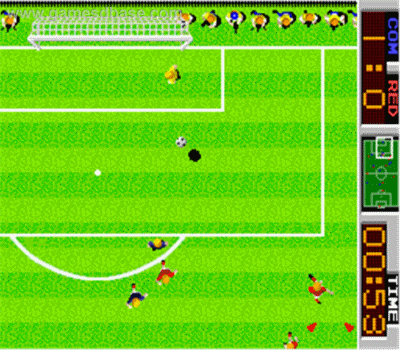
I shared my idea with some friends at school and one of them, Gabriel, was so excited that he composed the “main theme” of what we planned to be “our football game.”
Unfortunately, that project was never finished. To be honest, I do not remember exactly why it was put aside, but surely it had to do with some other project that appeared and motivated me even more.
However, I learned a lot from that experience. Some things that I remember that were particularly important:
- It was the first time I tried to develop a game with a “team”. I realized that it was not as easy as I thought it was going to be, given that it is very difficult to get a group to agree on the details, and it is also hard to make everybody actually work and do concrete stuff.
- I discovered that making the players that were not controlled by the users to move, to program that AI, was much more complicated than what I was expected. Making them run or kick the ball was the easy part, but making them play “as a team”, do coordinated moves, etc., was very complex.
- I also found that programming the movement of the user controlled characters was also more complicated than what I imagined. Until then, I had always done “original” and very simple games and this was the first time I was tried to make my game feel like another game, to be as fast and agile as Tehkan Worldcup.
In short, I found that making a video game is not as easy as it seems. I am sure that this is something that most developers learn just like me, when they face their first project and realize about the big challenges in videogame development.
Anyway, it was amazing as a professional growth experience. Maybe now, twenty years later, that distant dream could be resumed. Maybe now I could allocate some of my “free time” and start working on such a project, just for fun. Anyone else is up to the challenge?
A final question: what is your favorite football game?
Juan Pablo makes videogames since he was 8 and he is a father since 2004. Today, he has three children and he has worked in more than 20 videogames. He got interested on how paternity and the videogame industry are related and he decided to write about it, founding "Papa Game Dev".
Leave a Comment
Your email address will not be published. Required fields are marked *

